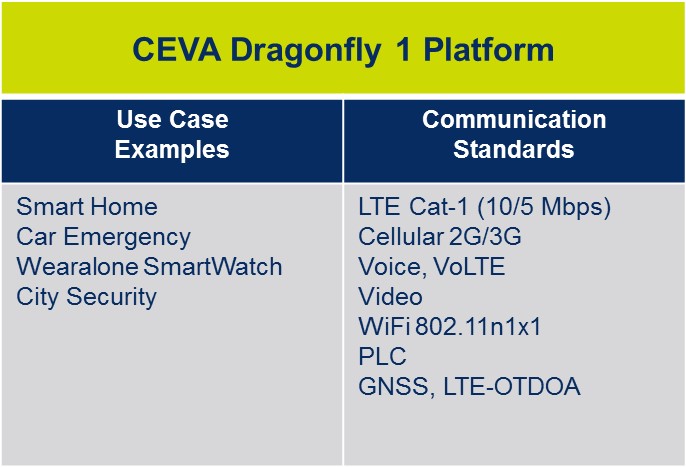Machine to Machine (M2M) communication spans over a wide range of communication techniques and scenarios. From wired communication like PLC to wireless communication like IEEE 802.15.4 wireless standard. From Personal Area Network (PAN) like Bluetooth to Local Area Network like WiFi to Wide Area Network (WAN) standards like cellular standard to Low Power Wide Area Networks (LPWAN) like LoRa or SigFox. Even when dealing with cellular communication, there are many different possibilities: GSM, WCDMA, LTE Machine Type Communication Release 12 or Release 13, NB-IoT and EC-GSM. This post will take a look at some of the challenges of supporting this wide variety of standards, and the requirements for a good solution.
The wide variety of protocols and standards mentioned above is necessary to support the huge and exciting world of IoT. Each method, or combination of multiple methods, is fit for different use-cases and scenarios. One of the greatest challenges in developing embedded solutions for IoT is to meet the demand for rich variety, while reducing the cost and power-usage of the actual devices. To achieve this, a central strategy is flexibility. The only way to keep up with the fast-paced evolution of the IoT is through updateable software. Our programmable DSP architecture is uniquely designed for communication applications, and incorporates SIMD and VLIW capabilities to enable efficient low power implementations of a multitude of algorithms. Our platforms are specifically designed to meet the various demands of many Machine Type Communication (MTC) scenarios. The freedom of software allows for the implementation of different layers of communication protocols combined with various methods of geographic positioning (GNSS, LTE-OTDOA etc.) all in one platform.
Keeping up with the Evolution of IoT
Some M2M devices are deployed for up to ten years, running only on batteries, for example, a grid monitoring device in a remote location. A device like this would have to be very cheap and very power-efficient. Any hardwired, fixed solution would be at risk of becoming outdated, or, if any problem in the implementation were to be revealed, all the deployed devices would have to be replaced. A flexible software solution, on the other hand, has the advantage of allowing remote software upgrades to add new features and support new standard releases.
In March this year, 3GPP is scheduled to complete Release 13 for the evolution of LTE, aimed to meet the requirements of very low power consumption and minimal bandwidth utilization. This release will include significant changes to the standard, dedicated to MTC, which will be implemented for the first time. But, according to 3GPP, some features will be allowed an extension, and will subsequently be released. This type of ongoing development and evolving standard imposes a huge risk on implementation. Any fixed hardware solution will undoubtedly become obsolete very quickly. This risk can be drastically mitigated by using a flexible software implementation, which can be updated easily. Updates can include significant algorithm changes, as well as minor modifications or bug fixes. Also, such a software development flow helps to minimize implementation errors in the first place. Another great advantage of this work flow is that it enables parallel development of the SoC design and the software design, which can significantly reduce time to market.
This is precisely what CEVA’s Dragonfly reference platforms offer by enabling parallel SoC and SW development with its development board, FPGA based HW accelerators and multi-communication SW libraries and standard optimized implementations.
 CEVA Dragonfly HW/SW Platform (Source: CEVA)
CEVA Dragonfly HW/SW Platform (Source: CEVA)
 MTC use-case scenario: fleet tracking (Source: Pixabay)
MTC use-case scenario: fleet tracking (Source: Pixabay)
Many IoT applications require multiple communications standards. The most cost-effective way to do this is to utilize the same platform resources. For example, a car fleet tracking system might require a combination of NB-IoT, EC-GPRS and LTE CAT-M, as well satellite positioning via GNSS. Running all these protocols on one powerful and highly efficient platform significantly reduces cost as opposed to using a different piece of hardware for each one. All these standards are covered by the CEVA Dragonfly 1 and Dragonfly 2 reference platforms, specifically optimized for IoT communication applications as well as UE terminals.

 CEVA Dragonfly reference platforms (Source: CEVA)
CEVA Dragonfly reference platforms (Source: CEVA)
No one can say exactly what the future holds, but it is clear that pace of progress is not showing any signs of slowing down. The only way to keep up is to use a flexible implementation that can easily be modified and updated. CEVA’s Dragonfly platforms combine flexibility with reduced TTM and risk by using field proven SW components and HW accelerators.
Want to hear more?
Click here to watch CEVA’s webinar about Machine Type Communication – How To Design a LTE-Based M2M Asset Tracker SoC.

